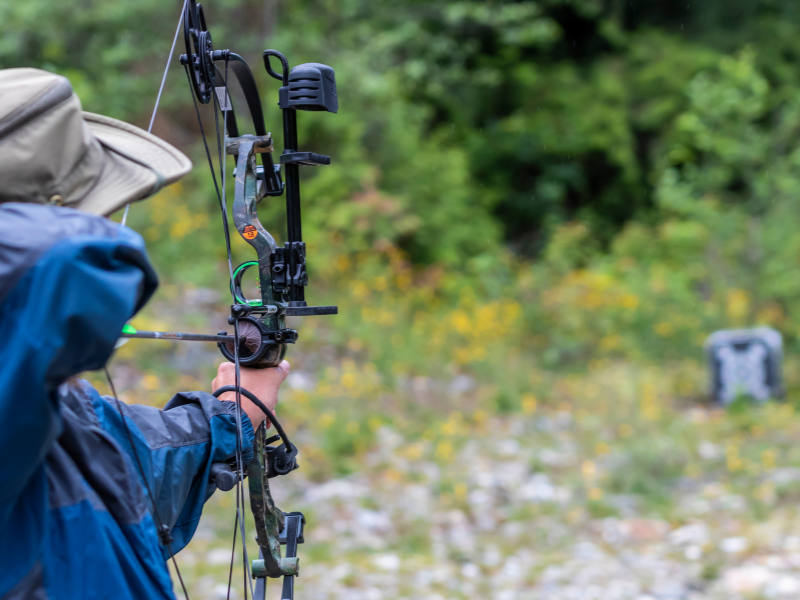
How Far Can Archery Shoot? Understanding the Effective Range of Bows
Archery is an ancient skill and sport, blending precision, technique, and the right equipment. One common question among enthusiasts is: How far can a bow shoot, and what is its effective range? Let’s explore these aspects in detail to understand the capabilities of different types of bows.
1. Maximum Range of a Bow
The maximum range of a bow refers to the farthest distance an arrow can travel when shot without specific accuracy requirements. This distance depends on the type of bow and the conditions under which it is used:
-
Traditional Longbows: Typically, longbows can shoot up to 200–300 meters in ideal conditions. These bows were historically used in battle for long-range volleys.
-
Recurve Bows: Modern recurve bows, like those used in the Olympics, have a similar maximum range of 200–300 meters, depending on the bow’s draw weight and the archer’s technique.
-
Compound Bows: With advanced pulley systems and superior energy efficiency, compound bows can achieve ranges of 500 meters or more under ideal circumstances.
Note: Maximum range is more about the bow’s power than practical use. It’s not the same as the effective range, which focuses on accuracy and purpose.
2. Effective Range of a Bow
The effective range is the distance within which a bow can shoot accurately and maintain enough power for its intended use, whether it’s target shooting or hunting. Here’s a breakdown:
-
Recurve Bows:
-
Effective range: 18–70 meters.
-
Olympic archers shoot at a standard distance of 70 meters.
-
At closer distances (e.g., 18 meters), these bows are highly accurate for indoor competitions.
-
-
Compound Bows:
-
Effective range: 30–90 meters.
-
Known for precision and power, compound bows are favored by hunters and competitive shooters for their ability to deliver consistent accuracy.
-
-
Traditional Longbows:
-
Effective range: 20–50 meters.
-
While these bows lack the technical enhancements of modern designs, skilled archers can achieve impressive accuracy within this range.
-
3. Factors That Influence Range
Several factors affect both the maximum and effective range of a bow:
-
Draw Weight: Higher draw weights generate more power, enabling the arrow to travel farther. For example, a bow with a 40-pound draw weight has a shorter range than one with a 60-pound draw weight.
-
Arrow Design: The weight and material of the arrow play a significant role. Lighter arrows travel farther but may lose energy more quickly, while heavier arrows retain kinetic energy over distance.
-
Archer’s Skill: Precision in form, consistent anchor points, and practice greatly improve an archer’s effective range.
-
Environmental Conditions: Wind, altitude, and terrain can all influence the flight of an arrow. Shooting uphill or against strong winds can reduce range, while favorable conditions can enhance it.
4. Practical Applications of Range
Understanding range is essential for different archery purposes:
-
Target Archery: Competitions are typically set within effective ranges to ensure accuracy and fairness. Indoor targets are placed at 18 meters, while outdoor ranges can extend up to 90 meters.
-
Hunting: Ethical hunting requires shooting within an effective range to ensure a clean and humane kill. For most hunters, this means staying within 30–50 meters. However, hunting is strictly prohibited in India, and engaging in such activities can lead to severe legal consequences. International visitors should verify regulations with the relevant country authorities.
-
Flight Archery: This discipline tests the maximum range of a bow. Archers use specialized equipment to achieve incredible distances, sometimes exceeding 500 meters.
5. Shooting Precautions
Archery is a rewarding sport, but it requires strict adherence to safety guidelines to prevent accidents and injuries. Here are some key precautions:
-
Always Inspect Equipment: Regularly check your bow and arrows for damage or wear. Faulty equipment can lead to accidents.
-
Use Proper Protective Gear: Wear an armguard, finger tab, or release aid to protect yourself from string slap and improve control.
-
Ensure a Safe Shooting Environment: Only shoot in designated areas with a clear backstop. Ensure the range is free of obstacles and people.
-
Be Aware of Your Surroundings: Never shoot if there are people, animals, or objects in the path of your arrow.
-
Follow Range Rules: Adhere to the specific rules and etiquette of the shooting range you are using.
-
Practice Controlled Shooting: Always draw and release the bow with intention and focus. Avoid dry-firing (releasing the string without an arrow), as it can damage the bow and cause injury.
-
Supervise Beginners: New archers should be supervised by experienced individuals or certified instructors to ensure proper technique and safety.
6. Final Thoughts
While a bow’s maximum range showcases its raw power, the effective range is what truly matters for practical applications. Whether you’re an aspiring archer or a seasoned enthusiast, understanding your bow’s capabilities and limitations can help you improve your skills and enjoy the sport safely and responsibly.
So, the next time you pick up a bow, remember: it’s not just about how far you can shoot, but how accurately you can hit your target within your effective range!
